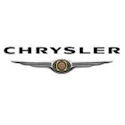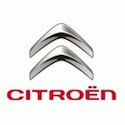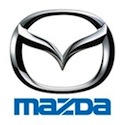Will Saab Make a Family Car?
For years, we have heard rumours that Saab was looking at finally attacking the market for seven-seat cars. Back in 2004, there were reports that Saab was looking to leverage its General Motors (GM) ownership to build a seven-seat crossover model. That idea was apparently based on using GM’s so-called Lambda platform to produce an upmarket seven seater. Unfortunately, nothing came of those reports and within a few years, Saab was sold off by a weak GM looking to avoid its own collapse.
While Saab was owned by GM, its American parent tried to shift the manufacturer of famously quirky but much-loved cars to something a little more mainstream. There was a lot of rummaging around in GM parts bins and plenty of badge-engineering.
Eventually, Saab was left with a product line up offering vaguely familiar designs that carried a lot of standard GM underneath. Though this may have cut design and production costs by a useful degree, it also eliminated a lot of the old reasons for buying a Saab.
After all, why pay over the odds for a Swedish badge glued to the bonnet of what was little more than a re-skinned Vauxhall Cavalier? Even worse, Saab’s legendary reliability also suffered.
Whatever your position on the strategy GM adopted towards Saab, it failed to kick Saab sales into high gear and the legendary Swedish automaker was left struggling to survive. The economic collapse in 2008 and the disastrous effects on US automakers left GM with little choice but to dump its holdings in Saab, which had become a major burden on the US car company.
In the wake of the US government bailout of General Motors, a recovery programme was implemented in a bid to clean up the worst drains on the company’s resources and to eliminate as much debt as possible. Last year, Dutch sports car company Stryker bought Saab from GM.
It is perhaps a shame that Saab has been unable to bring out a seven-seater in recent decades. The company has a fine heritage of such practical devices.
The Second Hand 93
The historic 93, a car on which Saab’s legend was largely built, was produced from 1959 to 1978. Originally sold with a noisy, smelly but remarkably potent two-stroke three-cylinder engine, the 93 was later fitted with a V4 sourced from Ford. While the 93 was turned into a fantastic seven-seat estate called the 95. With only two side doors, it was perhaps not the most practical seven-seater for passengers but it was a remarkable combination of carrying capacity and utility.
Unfortunately, the third row of seats in the 95 was actually a set of rear-facing folding seats most suitable for children. These rearmost seats were dropped from the 95 in 1976.
Not an Icecream
The 95 was replaced by the 99, which had actually gone into production back in 1968. The Saab 99 was the car that truly forged Saab’s reputation as a builder of incredibly reliable, quirky but curiously effective automobiles.
The follow-up model, the 900, was clearly inspired by the shape of the 99 and, along with small BMWs, became the darling of the 1980s ‘yuppy’. Although coach-builder Valmet produced a seven-seat prototype limousine based on the 900, Saab would never again produce something to suit Swedish drivers seeking seven seats.
Unfortunately, if recent news reports are any indication, Saab may never again have a change to build us an incredibly reliable, quirky but curiously effective seven-seater. Financial issues have led to all production being halted in what may turn out to be an indefinite stoppage.
The situation won’t in the least be helped by the fact that Saab owners Stryker are themselves running at a loss. Some industry analysts think both the Swedish government and many suppliers will be eager to find a way for Saab to survive. Other motor industry observers, however, see the latest development – Saab’s total inability to pay those suppliers – as a very bad omen, indeed.

 Audi 7-Seater
Audi 7-Seater BMW 7‐Seaters
BMW 7‐Seaters Chevrolet MPVs
Chevrolet MPVs Chrysler MPVs
Chrysler MPVs Citroen MPVs
Citroen MPVs Fiat 7-Seaters
Fiat 7-Seaters Ford 7-Seaters
Ford 7-Seaters Honda MPVs
Honda MPVs Hyundai MPVs
Hyundai MPVs Jeep 7-Seaters
Jeep 7-Seaters Kia 7-Seaters
Kia 7-Seaters Land Rover
Land Rover Mazda MPVs
Mazda MPVs Mercedes MPVs
Mercedes MPVs Mitsubishi
Mitsubishi Nissan
Nissan  Peugeot
Peugeot  Renault
Renault  SEAT 7‐Seaters
SEAT 7‐Seaters Ssangyong
Ssangyong  Toyota
Toyota  Vauxhall MPVs
Vauxhall MPVs Volkswagen
Volkswagen Volvo MPV
Volvo MPV All Manufacturers
All Manufacturers